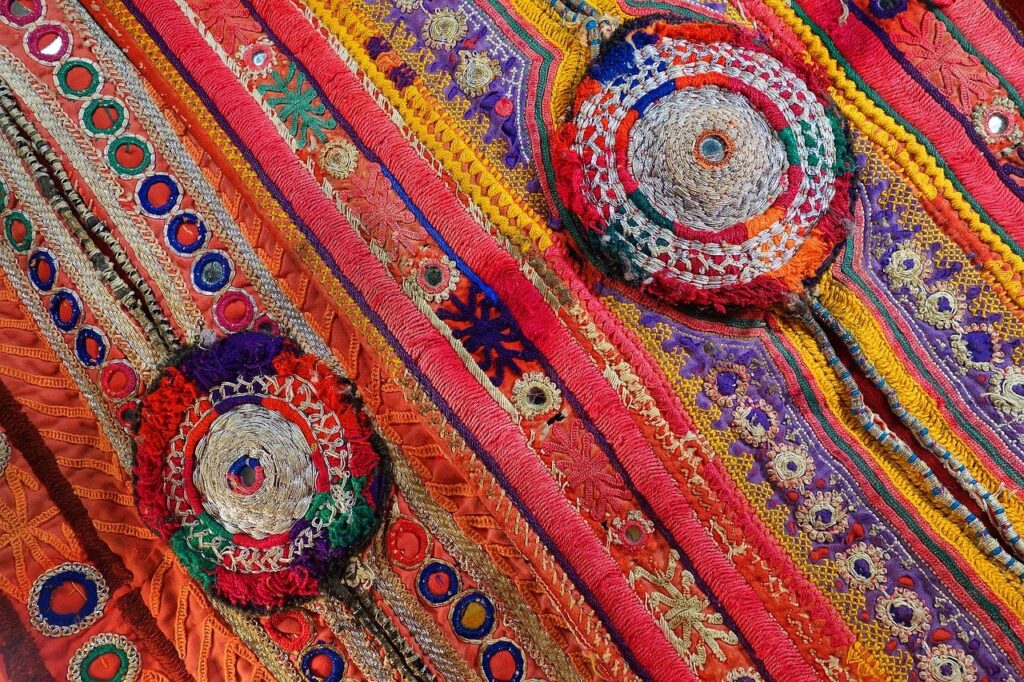Kutch embroidery is done on silk or cotton clothes with woolen or silk threads. The inspiration for the design can be anything ranging from a romantic story to a building. You can easily find embroidered dancing human figures as well as peacocks. Kutch handicraft also drives inspiration from Mughal and Persian art.

The mirror work used in kutch embroidery represents water. Water has special importance in a dry region like Kutch. It is also believed to keep away the evil eye and protect the person wearing it.
History of Kutch Embroidery
The origin of Kutch embroidery can be traced back to the sixteenth century when people were still migrating from all over the world to India. These places included places like Greece, Afghanistan, and Iran. The center of the immigration was Gujarat where all these people from different cultures met.
As the story goes, initially shoemakers of the Kutch region learned this handicraft from Muslim saints of Sindh. As the popularity of this handicraft increased, women started doing it in clothing also. Soon it became a reliable earning source for Kutch women. Along with that, it also fulfilled their need for having fancy clothes. The handicraft was taught to young girls by their mothers and thus passed on from generation to generation.
There is a mythological story of Kutch embroidery’s origin. It is associated with Karna, son of Kunti and an important figure in Mahabharata. It is said that he brought some cattle breeders known as “Kathi” to Kutch. They brought kutch embroidery with them. These folks produced various types of needlework that showed these themes, and patterns.
Different Styles of Kutch Embroidery
Ahir
Ahir community that migrated from Mathura have their own variant of kutch embroidery. They belong to the agriculture community, so their work represented nature such as birds and animals.
Aari
This variant is highly influenced by Mughal art.
Rabari
This type of embroidery is done by Rabari women of the Giri region. It is different from any other form of Kutch embroidery. Mythological patterns and different shaped mirrors are used in this variant.
Pako
The meaning of Pako is strong and solid. In this type of embroidery, solid black satin stitches are used to outline the mirrors.
There are some more varieties of Kutch embroidery done on different products. Even well-known fashion designers have used this handicraft in their clothing line. It is also getting worldwide recognition.
